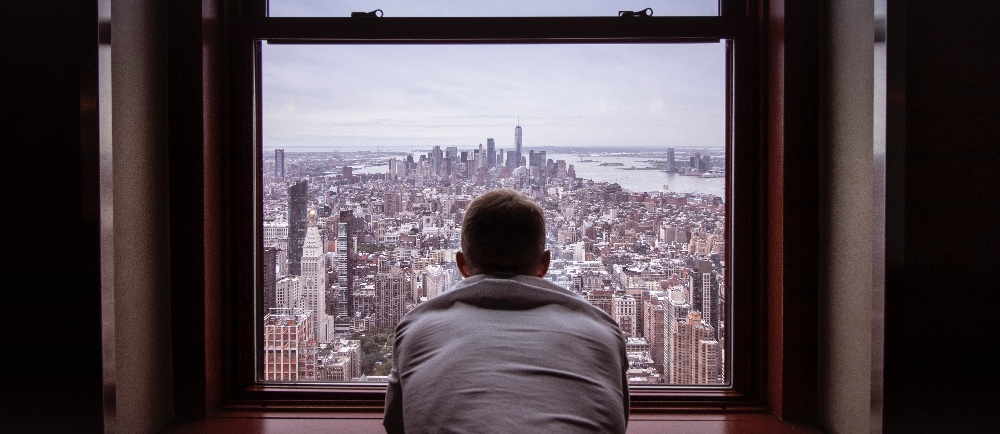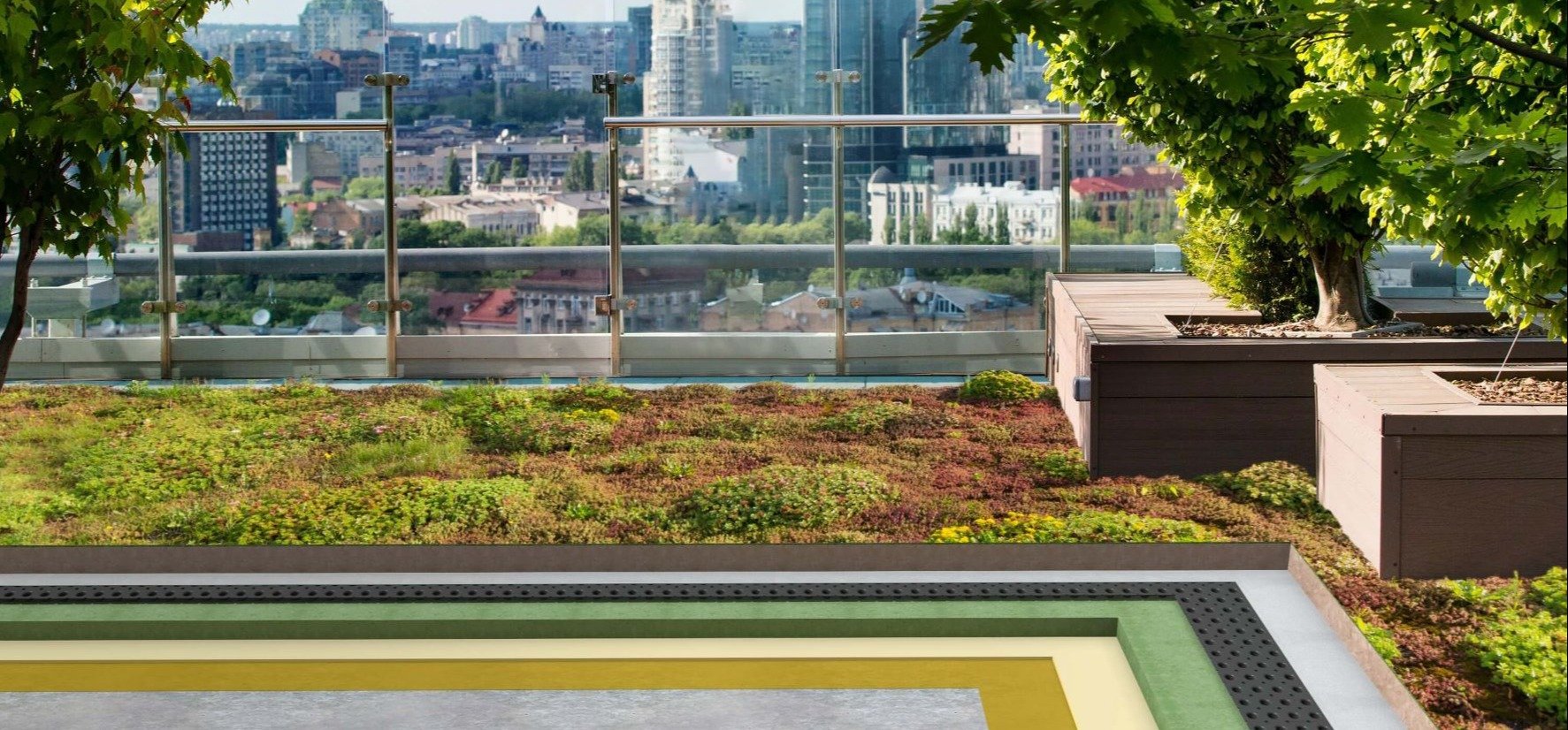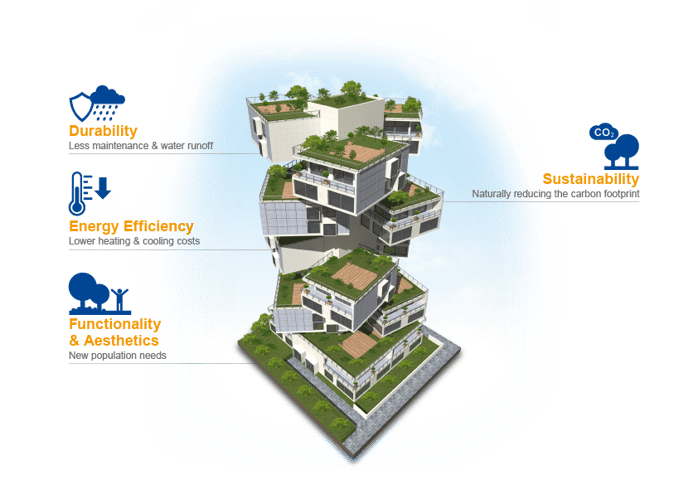Six ways that liquid-applied waterproofing save costs in green roofs
Posted by Albert Berenguel - 04 July, 2022
In a survey conducted after the COVID 19 pandemic by Civil Engineering Research and Innovation for Sustainability (CERIS) at the University of Lisbon (1), 79% of respondents from 35 countries liked the idea of a green roof at home to increase their access to plants.

Confinement highlighted the need for access to green spaces
Furthermore, people were willing to pay more for a green roof, with 53% happy to pay up to 2.5% on their monthly mortgage and 27% prepared to pay up to 5%, given that green roofs increase the value of the property.
However, the survey also revealed that cost was the main factor discouraging respondents from installing a green roof for 30% of them, followed by maintenance needs (25%). Liquid waterproofing membranes can help address both these concerns by reducing initial installation costs and providing a longer service life.
Green roofs explained
A green roof incorporates a layer of vegetation on top of a flat or slightly sloping roof. The build-up, from bottom to top comprises the waterproofing membrane, thermal insulation, drainage layer, geotextile filter and vegetation. This is known as an ‘inverted roof’.
The waterproofing layer, buried beneath all the other components of a green roof, has a major influence on the long-term performance of the roof. Additionally, using liquid-applied waterproofing membranes can simplify the installation phase which can also reduce capital costs.

Green roof system build-up
Why liquid waterproofing membranes can save installation and maintenance costs:
- No joints. Liquid membranes can be applied on vertical substrates and parapets to form a continuous layer with the horizontal surface. Detailing is simple, with no need for seams, moulded parts or mechanical fixings.
- Root penetration prevented. In addition to the root resistance of the membranes, full bonding of the membrane around details, transition points, etc, eliminates easy paths for roots to penetrate. The full adhesion of the membrane to the substrate also makes it difficult for the roots to penetrate.
-
No temporary ballast needed. During installation of the waterproofing membrane and the other components of the green roof, consideration should be given to the action of wind loads. Where loose-laid waterproofing membranes are being installed, suitable temporary ballasting measures must be put in place until the complete roof layers act as ballast and prevent wind uplift. For liquid membranes, this will generally not be required. For instance, MasterSeal M membranes, have a resistance to wind loads ≥ 50 kPa (derived from the maximum load applied by wind according to EAD 030350 – 00 – 0402).
-
No mechanical damage. During installation of the roof elements, waterproofing membranes should never be used as a working platform However, since thermal insulation is installed on top of the membrane (in inverted roofs), mechanical damage can occur which reduced the effectiveness of the membrane. Liquid membranes such as MasterSeal M membranes have a high resistance to mechanical, abrasion and impact damage.
-
Chemical resistance. Finally, MasterSeal M membranes have chemical resistance against fertilizers and other water-soluble substances used in gardens which could reach the waterproofing membrane, adding to the durability of the membrane.
MasterSeal polyurea membranes are resistant to aqueous solutions of organic and inorganic acids, inorganic bases and all types of salts.
- Leaks quickly located. Full adhesion to the substrate avoids the movement of water beneath the membrane if it is accidentally pierced. This means that leaks will be located at the damaged spot, allowing it to be quickly located and repaired, reducing the cost and time needed.

Main benefits of green roofs
In summary, the benefits of installing a green roof are significant: meeting the need for greenery in urban environments, creating positive environmental impacts, increasing the durability and yield of the roof and significantly reducing energy costs.
Using MasterSeal Roof systems for waterproofing will strengthen the benefits of green roofs while minimising the risks and costs associated with their installation and maintenance.
Read more about MasterSeal Roof systems and green roofs at: https://info-mbcc.sika.com/en/waterproofing/green-roofs
More information about MASTERING WATERPROOFING campaign: https://info-mbcc.sika.com/en/waterproofing
(1) Maria Manso, M. et al. University of Lisbon. “The role of green roofs in post-COVID-19 confinement: An analysis of willingness to pay”. Journal of Building Engineering 44 (2021)


